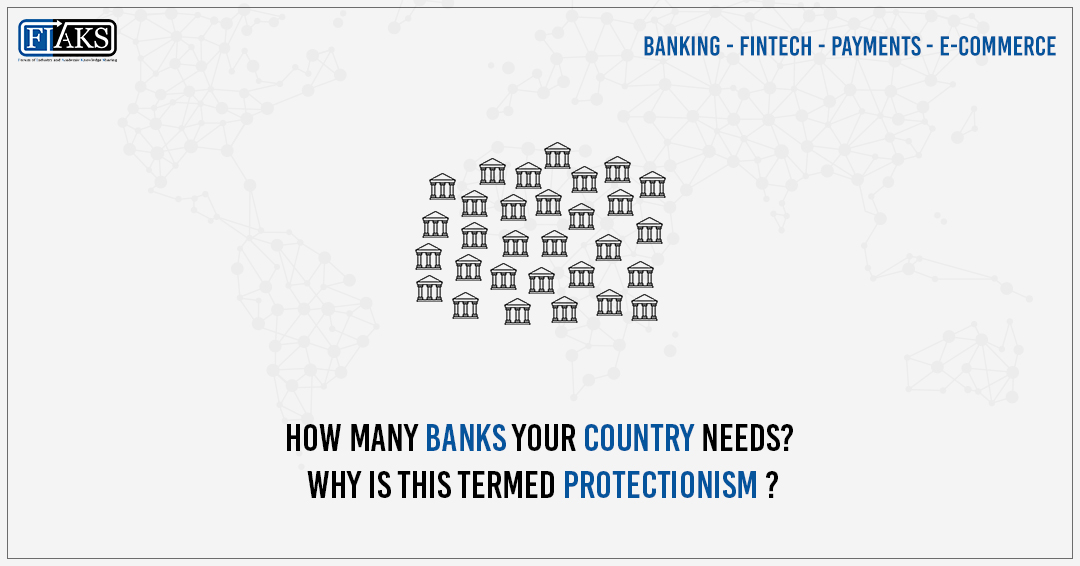Several Founders, Co-Founders, CXO Bankers, CXO Fintech professional & people who participated in the ePanel discussions:
- Mr. Sachin Nerurkar, MD & CEO at AquaGiraffe Technologies Pvt Ltd
- Mr. Rajiv Rai, Chief Digital Officer, Edelweiss Financial Services
- Mr. Anand Bajaj, Founder & CEO, Nearby Technologies Private Ltd.
- Mr. P B Prakash, Head Financial Institutions Group, IndusInd Bank
- Mr. Neeraj Chandra, Head of Operations, Abu Dhabi Commercial Bank
- Mr. Shashank Kumar, Co-Founder at Razorpay
- Mr. P D Singh, Former General Manager, Bank of Baroda
- Mr. Ratnakar V, DVP Rural Lending & Payments, Axis Bank
- Mr. Vishweshwaran R, Associate Director- IDFC Bank
- Mr. Kamonasish Aayush Mazumdar, Chief Marketing Officer, MeraEvents
- Many other CEO/CXO Bankers & Fintech professionals on FIAKS Forum
During a FIAKS discussion, an article was shared by a community member that arose interesting questions in the communities. The article shared was – Indonesia only needs 70 banks: Association. This article leads to the following questions about Indian banks. Like Indonesia, do we have any data on from any association on –
- How many banks do we need?
- How many bank branches do we need?
- How many ATMs do we need?
- How many wallets do we need?
- How many PGs do we need?
- How many NBFCs do we need?
A member questioned if this is coming out of protectionism because it seemed related to the License Raj era. But putting that aside, a more important question is – How many fintechs or startups are needed?
The answer is as many as the market can sustain. There is no number that is ideal and no formula to progress. Likewise, as many banks may want to operate, should be allowed and not be a concern unless the regulator does not have the bandwidth to manage them.
We must accept Indian banking is still under License Raj which is adding heavily to its problems especially on customer service and over pricing. Ideally, we should have a situation where fresh licenses are issued every fourth or fifth year with a transparent bidding process like telecom.
A community member shares a Quora page that explains what License Raj is – What is license raj (in India)? An excerpt from that article is shared below –
License Raj, a product of the Nehru administration, was an elaborate system of licences and regulations and other loops that one had to jump through in order to set up a business in India.
It was a result of a decision to have a planned economy where all aspects of the economy would be controlled by the government because there was a large amount of unemployment in India. Other than agriculture, there were no jobs that were available. Infrastructure was virtually non-existent and the government coffers were empty, so there was no question of undertaking large scale infrastructure projects too.
The License Raj was established based on what is called the Import Substitution Industrialization (ISI), a trade policy that advocates replacing foreign imports with domestic production, with an aim to spur up the local production by reducing foreign and private competition.
With License Raj in place, for any private business to be set up, one needed the approval of numerous (sometimes as many as 80!) governmental agencies which consumed a lot and resources and time and hence discouraged a lot of people from even trying. Even if someone successfully got the approval of all the required agencies, the quantities of goods produced, the capital used and their sale prices would be regulated by the government, hence leading to huge inefficiencies for the manufacturer. Moreover, once set up, the government could also prevent firms from laying off workers or closing factories
A member believes that for banks, they can be made to follow this rule but it shouldn’t be the same for fintechs. We shouldn’t put a license when it comes to innovation.
Answering the previous question, it is not protectionism. Estimation followed by implementation and subsequent measurement of quality of every aspect of life is needed. Measuring one does not prevent the measuring of another.
A member states that the question should be – How many minimum bank branches do we require? Putting a cap on the maximum allows the existing ones to be complacent.
A bigger question is – Should we allow banks to fail? We have not done that effectively. If we do that effectively, then the churn will happen and only the best will survive. Depositors will think twice before they park their money in any place.
Keeping banks on PCA (Prompt Corrective Action) endlessly is a waste of resources. If they can’t get in shape within a specific timeframe, they should be allowed to fail and allow a new bank to come up in its place.
These were the questions license Raj tried answering in our country for 40 years. The result was we had to wait 10 years for a Bajaj auto. Let the market forces decide. The regulator ensures that nobody runs away with the money and security is theirs to repay.
Next question that arose during the discussion was – Doesn’t the Consumer Banking Head usually ask how many branches are needed to reach the target of CASA deposits? Will, that becomes License Raj?
Register and Read the entire discussions

